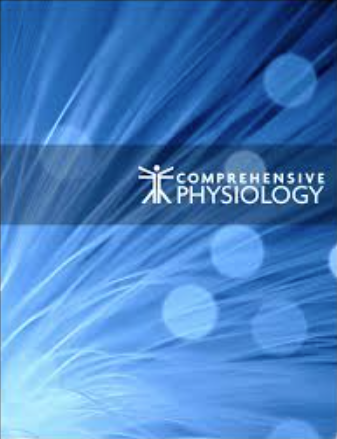求助PDF
{"title":"电子烟对周边嗅觉系统的修饰。","authors":"Abdullah AlMatrouk, Kayla Lemons, Tatsuya Ogura, Weihong Lin","doi":"10.1002/cphy.c210007","DOIUrl":null,"url":null,"abstract":"<p><p>Electronic cigarettes (e-cigs) are used by millions of adolescents and adults worldwide. Commercial e-liquids typically contain flavorants, propylene glycol, and vegetable glycerin with or without nicotine. These chemical constituents are detected and evaluated by chemosensory systems to guide and modulate vaping behavior and product choices of e-cig users. The flavorants in e-liquids are marketing tools. They evoke sensory percepts of appealing flavors through activation of chemical sensory systems to promote the initiation and sustained use of e-cigs. The vast majority of flavorants in e-liquids are volatile odorants, and as such, the olfactory system plays a dominant role in perceiving these molecules that enter the nasal cavity either orthonasally or retronasally during vaping. In addition to flavorants, e-cig aerosol contains a variety of by-products generated through heating the e-liquids, including odorous irritants, toxicants, and heavy metals. These harmful substances can directly and adversely impact the main olfactory epithelium (MOE). In this article, we first discuss the olfactory contribution to e-cig flavor perception. We then provide information on MOE cell types and their major functions in olfaction and epithelial maintenance. Olfactory detection of flavorants, nicotine, and odorous irritants and toxicants are also discussed. Finally, we discuss the cumulated data on modification of the MOE by flavorant exposure and toxicological impacts of formaldehyde, acrolein, and heavy metals. Together, the information presented in this overview may provide insight into how e-cig exposure may modify the olfactory system and adversely impact human health through the alteration of the chemosensory factor driving e-cig use behavior and product selections. © 2021 American Physiological Society. Compr Physiol 11:2621-2644, 2021.</p>","PeriodicalId":10573,"journal":{"name":"Comprehensive Physiology","volume":null,"pages":null},"PeriodicalIF":4.2000,"publicationDate":"2021-10-18","publicationTypes":"Journal Article","fieldsOfStudy":null,"isOpenAccess":false,"openAccessPdf":"","citationCount":"0","resultStr":"{\"title\":\"Modification of the Peripheral Olfactory System by Electronic Cigarettes.\",\"authors\":\"Abdullah AlMatrouk, Kayla Lemons, Tatsuya Ogura, Weihong Lin\",\"doi\":\"10.1002/cphy.c210007\",\"DOIUrl\":null,\"url\":null,\"abstract\":\"<p><p>Electronic cigarettes (e-cigs) are used by millions of adolescents and adults worldwide. Commercial e-liquids typically contain flavorants, propylene glycol, and vegetable glycerin with or without nicotine. These chemical constituents are detected and evaluated by chemosensory systems to guide and modulate vaping behavior and product choices of e-cig users. The flavorants in e-liquids are marketing tools. They evoke sensory percepts of appealing flavors through activation of chemical sensory systems to promote the initiation and sustained use of e-cigs. The vast majority of flavorants in e-liquids are volatile odorants, and as such, the olfactory system plays a dominant role in perceiving these molecules that enter the nasal cavity either orthonasally or retronasally during vaping. In addition to flavorants, e-cig aerosol contains a variety of by-products generated through heating the e-liquids, including odorous irritants, toxicants, and heavy metals. These harmful substances can directly and adversely impact the main olfactory epithelium (MOE). In this article, we first discuss the olfactory contribution to e-cig flavor perception. We then provide information on MOE cell types and their major functions in olfaction and epithelial maintenance. Olfactory detection of flavorants, nicotine, and odorous irritants and toxicants are also discussed. Finally, we discuss the cumulated data on modification of the MOE by flavorant exposure and toxicological impacts of formaldehyde, acrolein, and heavy metals. Together, the information presented in this overview may provide insight into how e-cig exposure may modify the olfactory system and adversely impact human health through the alteration of the chemosensory factor driving e-cig use behavior and product selections. © 2021 American Physiological Society. Compr Physiol 11:2621-2644, 2021.</p>\",\"PeriodicalId\":10573,\"journal\":{\"name\":\"Comprehensive Physiology\",\"volume\":null,\"pages\":null},\"PeriodicalIF\":4.2000,\"publicationDate\":\"2021-10-18\",\"publicationTypes\":\"Journal Article\",\"fieldsOfStudy\":null,\"isOpenAccess\":false,\"openAccessPdf\":\"\",\"citationCount\":\"0\",\"resultStr\":null,\"platform\":\"Semanticscholar\",\"paperid\":null,\"PeriodicalName\":\"Comprehensive Physiology\",\"FirstCategoryId\":\"3\",\"ListUrlMain\":\"https://doi.org/10.1002/cphy.c210007\",\"RegionNum\":2,\"RegionCategory\":\"医学\",\"ArticlePicture\":[],\"TitleCN\":null,\"AbstractTextCN\":null,\"PMCID\":null,\"EPubDate\":\"\",\"PubModel\":\"\",\"JCR\":\"Q1\",\"JCRName\":\"PHYSIOLOGY\",\"Score\":null,\"Total\":0}","platform":"Semanticscholar","paperid":null,"PeriodicalName":"Comprehensive Physiology","FirstCategoryId":"3","ListUrlMain":"https://doi.org/10.1002/cphy.c210007","RegionNum":2,"RegionCategory":"医学","ArticlePicture":[],"TitleCN":null,"AbstractTextCN":null,"PMCID":null,"EPubDate":"","PubModel":"","JCR":"Q1","JCRName":"PHYSIOLOGY","Score":null,"Total":0}
引用次数: 0
引用
批量引用


